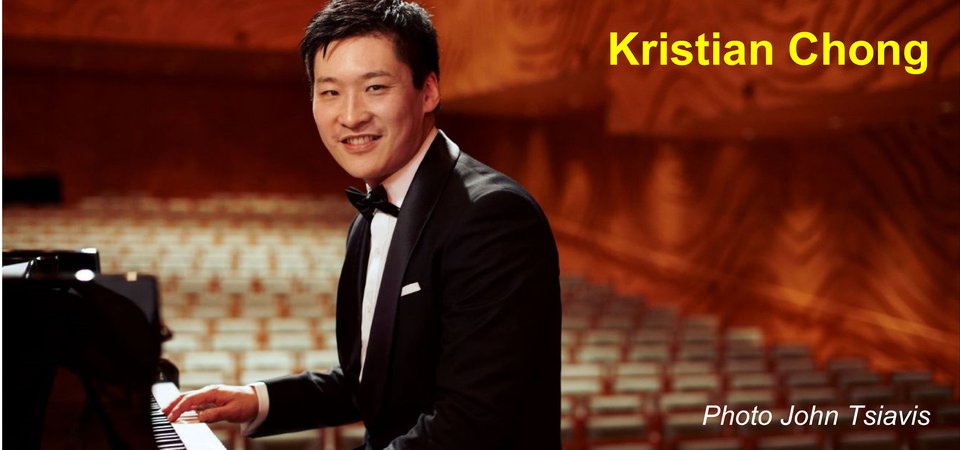
Concert Review – Heather Leviston
The last time Zelman Orchestra gave a major public performance it was in the Sidney Myer Music Bowl, where many members of the rain-jacketed audience were sheltering under umbrellas in their socially distanced pens to hear Luke Styles’ No Friend but the Mountains: A Symphonic Song Cycle. Any discomfort was more than compensated for by the moving poetry of Afghani refugee, Behrouz Boochani, and the quality of the performance. Baritone Adrian Tamburini was in fine voice and Zelman Symphony was in great form.
Almost exactly one year later the pandemic is still with us, albeit in less lethal form, and political decisions still cause untold suffering. Now we have another wave of refugees – Ukrainians fleeing their devastated homes. So what to program? Should a Russian composer be featured? Fortunately, Zelman Symphony’s conductor, Rick Prakhoff and guest artist, Kristian Chong, thought that Shostakovich’s Piano Concerto No. 2 in F major would be an excellent choice. It was. Before playing Sibelius’s Fifth Symphony, Prakhoff defended his decision – not that it really needed defending. He told us how members of his own family are from Kyiv and how Ukrainians considered music by Russian-born composers as their own. Besides which, of all Russian composers, Shostakovich is known for his struggle with Stalin’s reign of terror, making a work by him particularly appropriate.
Two back-to-back piano concertos is a big ask for any pianist, and Kristian Chong said that this was the first time he had undertaken such a feat. As one of Melbourne’s most experienced and technically skilled artists, the large audience was delighted that he had; many would have attended for just that reason.
Mozart’s captivating Piano Concerto No. 20 in D minor is a popular work, which Chong performed with notable clarity and finesse. A dramatic orchestral introduction, reminiscent of Don Giovanni, saw the beginning of some commendable work from the horns, flute, bassoons and oboes – the beginning of what proved to be an exceptionally strenuous workout for these players throughout the evening. The piano enters alone in a more meditative mood, but things soon heat up and proceed, often in in the form of a dialogue between piano and orchestra, with contrasting ideas juxtaposed, even within the cadenza – so carefully shaped by Chong. The slow movement, entitled “Romance”, begins quietly but stormy passages of exciting virtuosity interrupt until the tranquil melody reasserts itself. After further drama and contrasting moods in the finale, the end of the second cadenza did not quite go to plan. There was, however, a commendable recovery from a slightly early entry by the orchestra – a credit to Prakhoff’s clear direction and players’ presence of mind. As with most of Mozart’s works, including the end of this concerto, things ended happily. Young pianists in the audience must have been inspired by Chong’s fluid, apparently effortless command of even the most demanding passages.
Shostakovich wrote his Second Piano Concerto in 1957 to celebrate his son Maxim’s 19th birthday and his graduation from Moscow Conservatory. By then Stalin was dead and life had taken a more optimistic turn, and this is reflected in the essentially cheerful character of the concerto. With additional players – two more horns, two clarinets, another flute and a piccolo – the orchestral texture became denser. A bassoon introduced the lively theme of the opening Allegro movement, followed by clarinets, oboes and finally an unobtrusive piano. There was some full, rich sound coming from the orchestra in this movement, with pleasingly resonant contributions from the lower strings. Towards the end, the piano’s scales and tremolos were briefly submerged by the orchestra’s full-bodied playing of the main theme, only to resurface in a final rapid outburst of playful energy. The Andante struck a more subdued, romantic note, while the final Allegro featured dance rhythms and was generally more lightly orchestrated. Pizzicato strings, some passages of extraordinarily bell-like tone from Chong’s piano, and a jubilant ending left the audience smiling.
Considering the ongoing social distancing restrictions for rehearsals, the choice of a difficult Sibelius symphony was decidedly ambitious. The work demands additional brass, including a solo trumpet, to provide the dark, forbidding atmosphere of the first movement, which was successfully conveyed. Although not all string players appeared to be able to manage some of the tremolo passages, it really didn’t matter – even fully professional players have been known to skip a few notes here and there. In the end, the strength of key players and Prakhoff’s well-defined direction resulted in a commendable performance on the whole. The four horn players deserved the first of the conductor’s special acknowledgements, as did the wind players and timpanist.
Zelman Symphony can chalk up another successful outing featuring a warm-hearted sense of community and some exceptional music making.
Mozart, Shostakovich and Sibelius was on Saturday 26 March 2022, 7.30pm at James Tatoulis Auditorium - MLC - Kew.
Concert Info